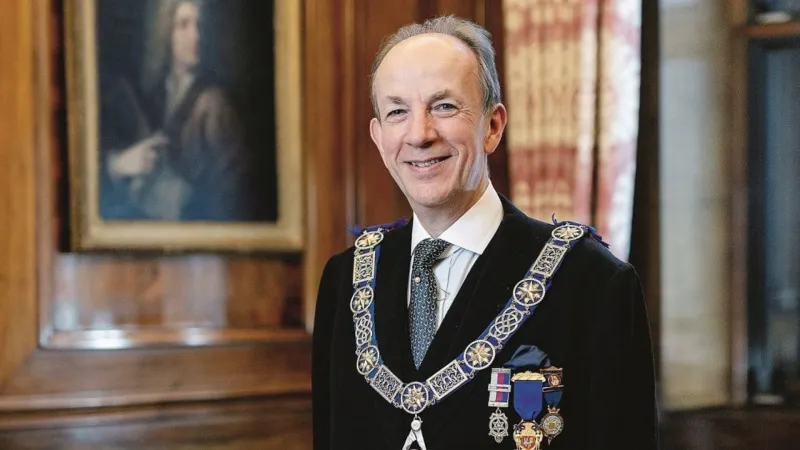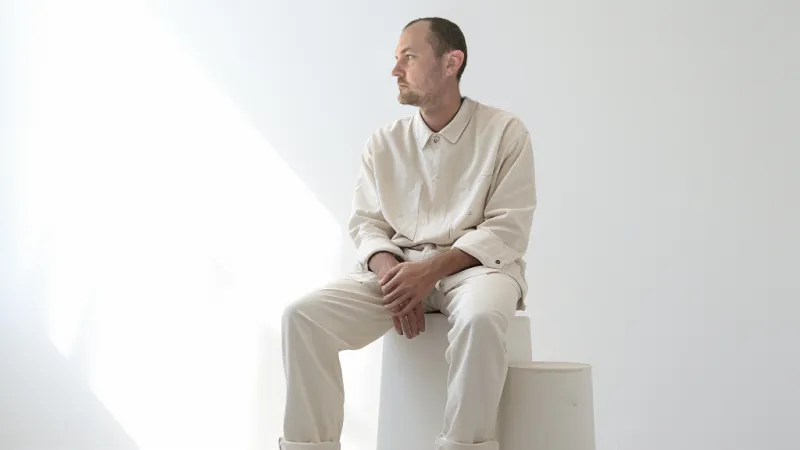
In Episode 5, Season 2 of Craftcast, the Freemasons Podcast, our hosts sit down with Chris Hirst nearly a year after his first appearance on Season 1 of Craftcast.
They revisit the importance of the Members' Pathway in the context of the UGLE 7-Year Strategy and discuss its integral role in shaping the future of Freemasonry. Chris provides insights into the four critical areas of the Members' Pathway: Plan, Attract, Engage, and Retrieve.
Chris Hirst, the project manager overseeing the Members' Pathway, joins the conversation to explore its importance for individual Freemasons and their Lodges.
Chris's presence on Craftcast isn't new; he previously appeared alongside Assistant Grand Master Steven Varley and Provincial Grand Master of Derbyshire, Ian Copestake, in Season One. Their initial discussion introduced the Members' Pathway and its implications. However, revisiting the subject seemed warranted, given its pivotal role in the organisation's strategy and future. There's still much ground to cover and valuable insights to share.
Chris explained that the Members' Pathway consolidates a collection of best practices sourced from various areas within UGLE. These practices have been documented through collaboration with Provincial and Metropolitan teams to determine the most effective ways to shape the future of Freemasonry. It serves as a central resource, available to all Freemasons, enabling them to come together, shape the future of their Lodges, and contribute to the growth of Freemasonry.
The Members’ Pathway is housed on a website called bUGLE by UGLE. However, you don't have to visit bUGLE to access it exclusively. Within your Province or Metropolitan area, you'll find an array of documents available in both hard and soft copy formats that assist in navigating the Members' Pathway.
At its core, the Members' Pathway comprises four areas: Plan, Attract, Engage, and Retrieve. Each area delves into different aspects of how a Lodge operates and how Freemasons engage with it.
In the planning phase, we examine the inner workings of a Lodge: its structures, officer progressions, membership trends, and future planning strategies. This involves understanding when members join or leave, identifying triggers, and finding ways for Lodges to operate more efficiently and effectively. It's also about ensuring we have the resources to attract new Freemasons of all ages, not just the young ones.
It's crucial to dispel the notion that the Members' Pathway is solely about recruitment. It's equally focused on keeping members engaged and ensuring they find enjoyment in their Masonic journey. This is where the Engage hub comes into play. Here, we emphasise personal and guided learning within the Temple and the friendships and connections formed outside formal ceremonies.
A key aspect linking the Members' Pathway to our broader strategy is the 'yes, if' attitude. This approach encourages openness and exploration, fostering an environment where members feel empowered to engage positively and contribute to the fraternity's growth and vitality.
The Members' Pathway has significantly changed how Freemasons approach candidate ceremonies, especially in embracing the idea of conducting multiple ceremonies. It starts with making candidates feel welcomed and comfortable right from the beginning rather than subjecting them to intimidating interview processes.
In the past, candidates often faced a daunting interview panel, which felt more like a job interview than an invitation to join a friendly fraternity. However, with the Members' Pathway guidance, Lodges are encouraged to simplify the interview process. Instead of facing a large panel, candidates now meet with a smaller, more approachable committee of just a few members. This change not only eases nerves but also fosters a sense of camaraderie and friendship from the start.
The shift towards multiple candidate ceremonies is a testament to Freemasonry's ability to adapt and ensure its future sustainability. With more people showing interest in joining, finding efficient ways to engage with them is crucial. Long waiting lists of twelve months or more just don't cut it anymore. Instead, Lodges are seizing the opportunity to simultaneously conduct ceremonies with several candidates.
While multiple candidate ceremonies might sound like a new trend, they actually have a long history dating back to the First World War. During those challenging times, Lodges initiated groups of six or even twelve candidates together, seeking the camaraderie they had experienced during wartime. Today, these ceremonies continue to forge strong bonds between candidates, creating lasting connections built on shared experiences.
The special bond formed during multiple candidate ceremonies is unique and cannot be replicated. Whether it's the excitement of navigating the initiation process together or the solidarity forged through shared challenges, these ceremonies leave a lasting impact on everyone involved. Recent examples, like Gavel Lodge's initiation of nine candidates, highlight the success and significance of these ceremonies.
Ultimately, the Members' Pathway encourages Lodges to see a backlog of candidates as a positive opportunity rather than a burden. By embracing multiple ceremonies and prioritising inclusivity, Freemasons are ensuring the organisation's continued growth and relevance in today's world.
The discussion turned to how Lodges can support each other, especially when one Lodge has a backlog of work. Chris mentioned that while the current Members' Pathway doesn't directly address this, there are plans for an update soon. Chris explained that the update won't completely change the Members' Pathway but will tweak it based on feedback and align with new strategies.
They stressed the importance of being open to doing multiple ceremonies, especially in areas without University Scheme Lodges. For example, in London, Lodges often help each other during busy times.
Chris shared a touching story from his own Lodge, where they initiated a friend from university and later did his Second and Third Degrees in the Temple where his father and grandfather had been Freemasons. It showed how Freemasonry can be like a family celebration and help ease workload pressures.
When considering the importance of the Members' Pathway for individual Lodge members, it's essential to grasp its broader significance. While developed by UGLE, it's not just a tool for the organisation; it's for every member within UGLE. This pathway outlines the journey of attracting, engaging, and retaining members while also offering opportunities for those who may have drifted away from Freemasonry to reconnect with their Lodge.
For Lodge members, active participation is fundamental to the future vitality of their Lodge. Members play a pivotal role in shaping the Lodge's future by attending meetings, enjoying fellowship, and contributing to the activities. The essence of Freemasonry lies in camaraderie and enjoyment, as reflected in the 'fun and enjoyment' thread within the engage section of the Members' Pathway.
The pathway emphasises that Lodge participation should never feel burdensome. While there may be occasional challenges, such as preparing for rituals or fulfilling administrative duties, the ultimate experience is one of camaraderie and friendship. It's about fostering a sense of inclusivity where every member feels valued and welcomed.
Tradition certainly holds a place within Freemasonry, but it should complement a culture of inclusivity and adaptability. The 'yes if' strategy underscores this ethos, encouraging Lodge members to embrace opportunities for growth and improvement outlined in the Members' Pathway.
In essence, the Members' Pathway serves as a roadmap for Lodge members to actively shape their Lodges' future. With its framework of best practices endorsed by UGLE, it empowers members to embrace positive changes and collectively contribute to the thriving community of Freemasonry.
We've delved into why the Members' Pathway is a big deal for Freemasonry and how it affects individual members. But let's not forget about our non-member pals who tune in. Why should they care about this stuff, and how does it matter to them? Chris highlighted the importance of the 'Attract' section within the Members' Pathway, where Freemasons are prompted to consider how they communicate about Freemasonry to those who aren't familiar with it. Sometimes, we use words and phrases that might sound a bit old-fashioned or confusing to folks outside Freemasonry. So, the challenge is to find ways to explain what Freemasonry is all about in simple, easy-to-understand terms that anyone can get behind.
Joining Freemasonry can feel like stepping into a whole new world, and it can take years to really get your head around it all. But by making things clearer and busting any myths or misunderstandings, the Members' Pathway helps to make Freemasonry more accessible and welcoming to everyone, whether you're a member or not.
For those new to the Pathway, Chris suggested that there's also helpful info in newsletters like the First Rising and magazines like Freemasonry Today. Additionally, UGLE's members' platform, bUGLE, and Provincial materials are handy resources.
Listen to the full ‘The Members’ Pathway. A Year Later’ podcast
Lister to the rest of Craftcast podcast


